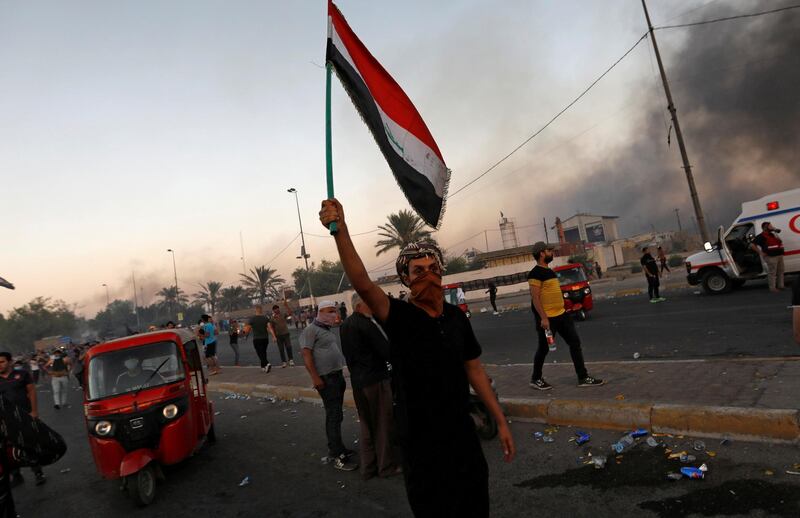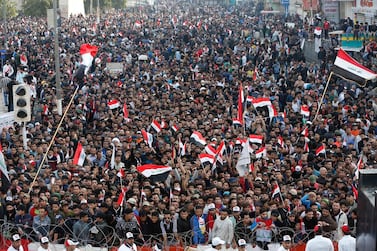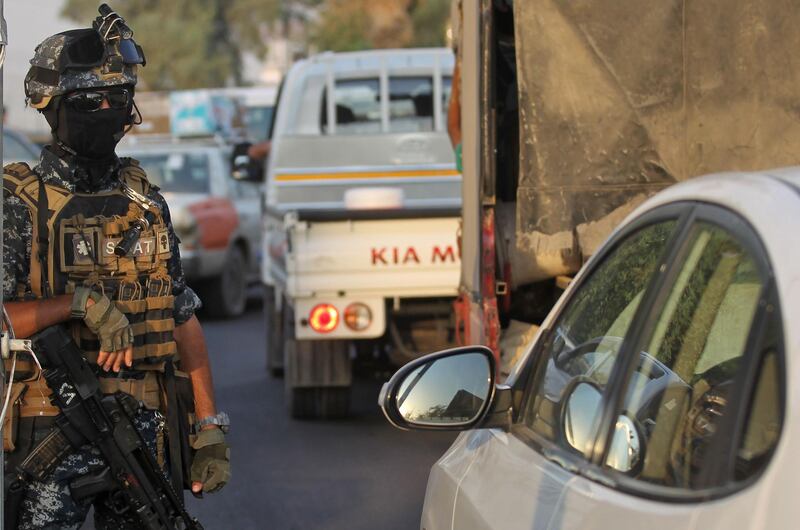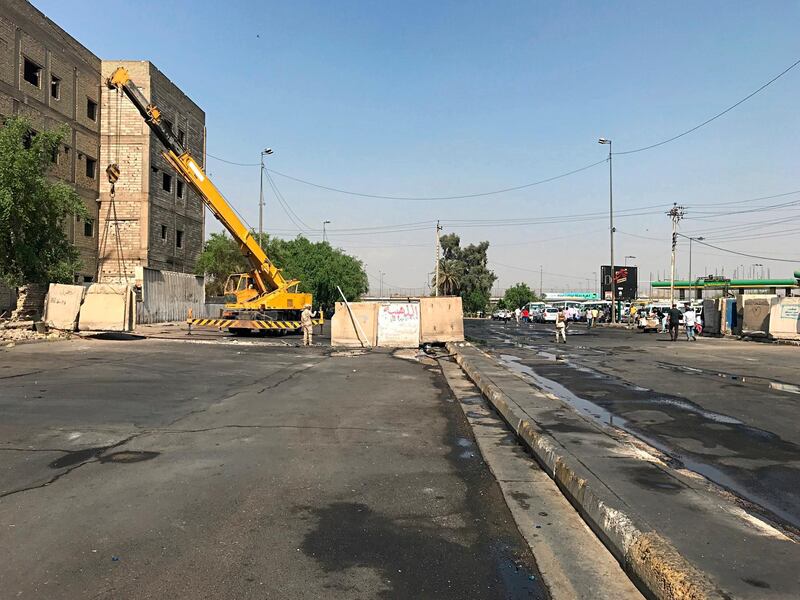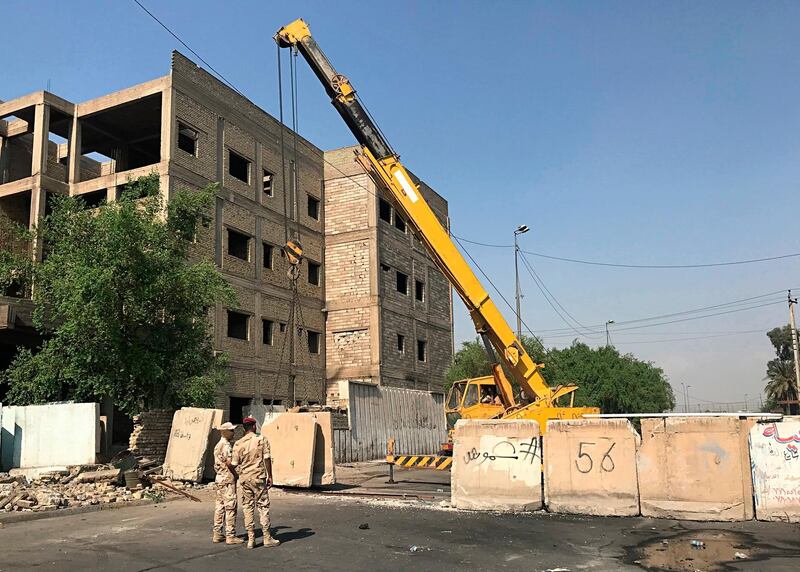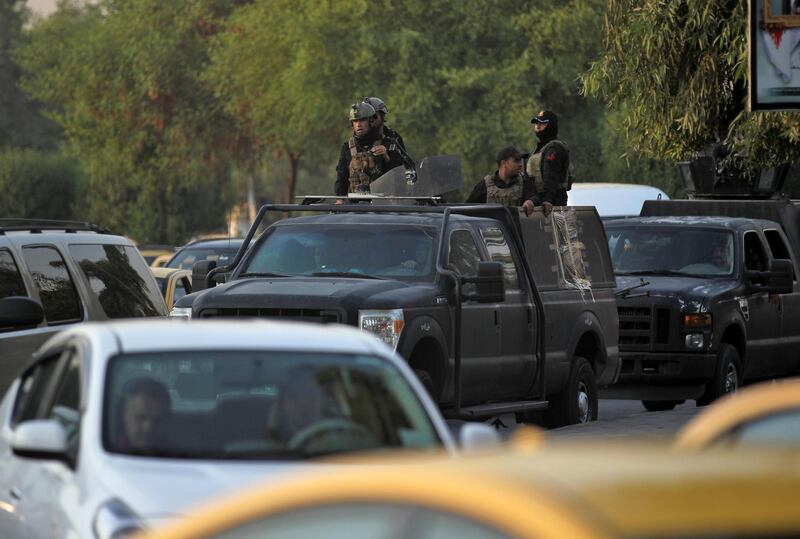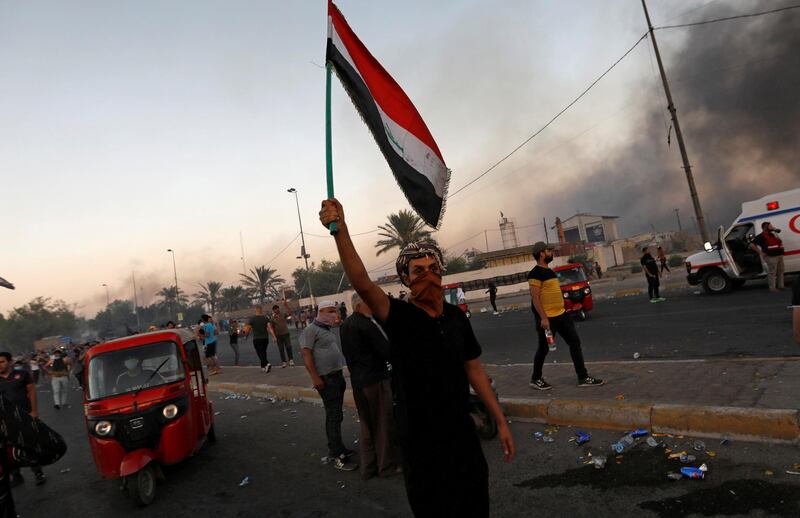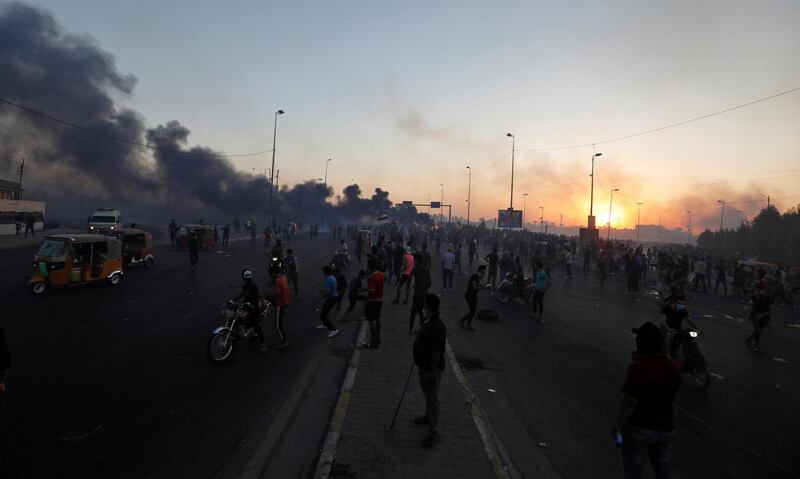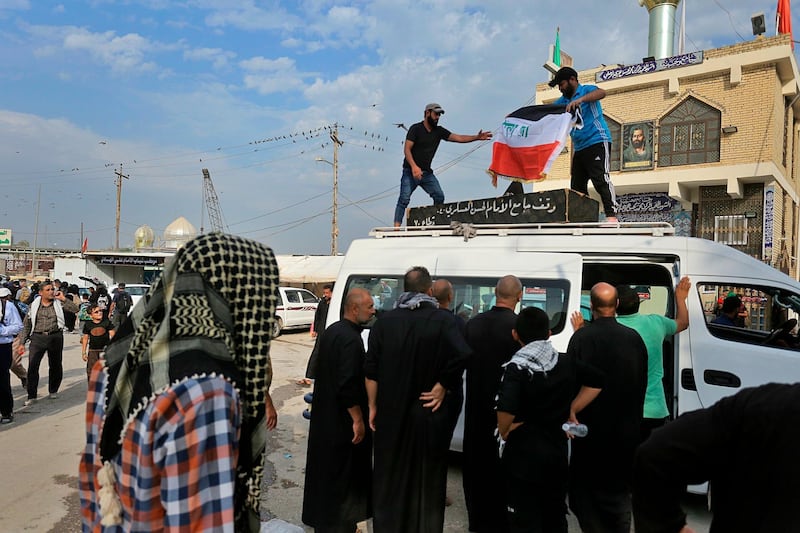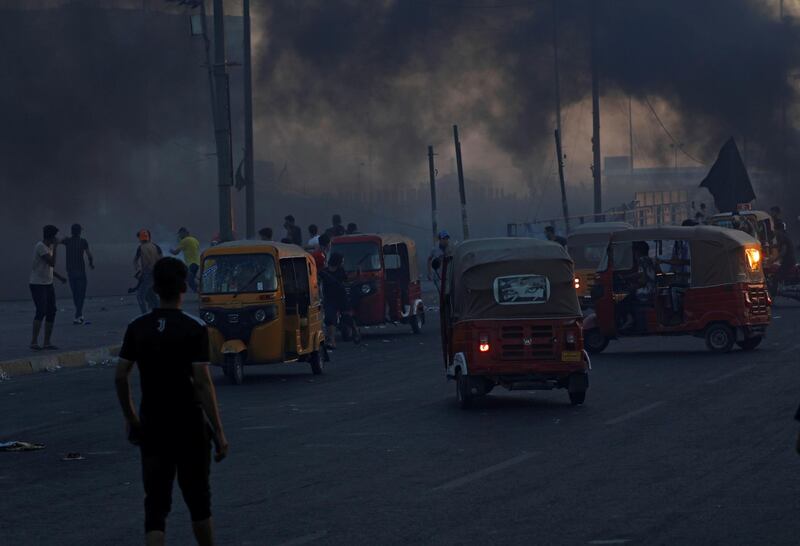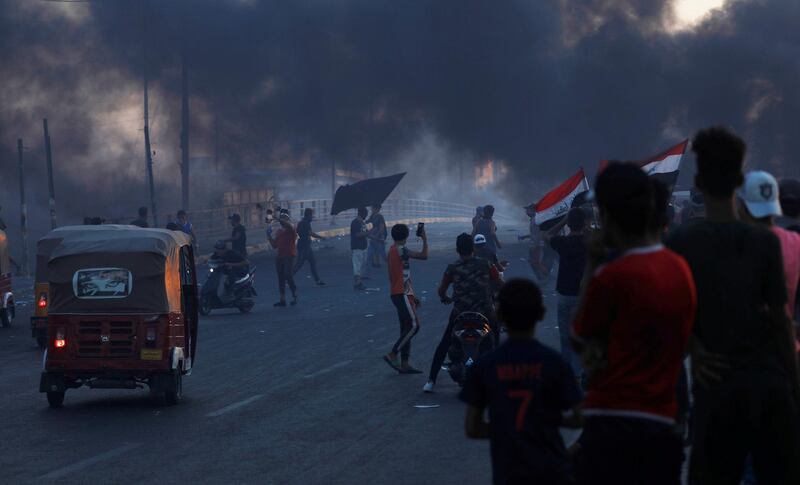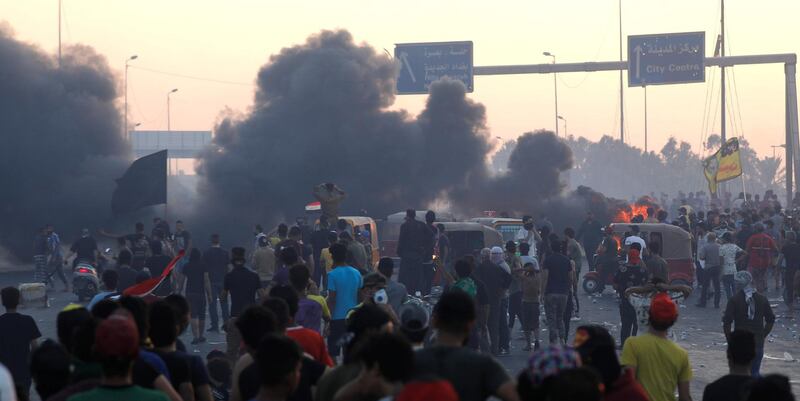Leila Abbas Hussein sobbed over a pair of sneakers, her entire body shaking. “These are his shoes,” she said, almost choking on her words. “These are the martyr’s shoes.”
Her 20-year-old son Mohamed Habib Abbas was one of the first to die in the protests against endemic corruption that swept Iraq this month. Along with thousands of other mostly young protesters, he was demanding basic necessities: jobs, education, health, electricity and water.
Mohamed went out carrying only an Iraqi flag on October 1, the day the protests began, Leila said. He was shot in the chest with live bullets and died the same day.
She seethes with anger at Iraqi politicians. “We demand the closure of the parliament,” she said. “They took Iraq’s money, broke it and destroyed it.”
Iraq’s brutal crackdown on protests that lasted for a little over a week left more than 100 dead and about 6,000 injured.
In a forceful sermon on Friday, Iraq's top Shiite cleric Ali Al Sistani blamed the government for the protesters' deaths and gave it two weeks to investigate the "undisciplined elements", an allusion to the Iranian-backed militias many believe to behind much of the violence against protesters.
Prime Minister Adel Abdul Mahdi was brought to power by a coalition supported by and representing many of these militias, but has since launched an investigation into the “unidentified elements” who authorities say were behind the killings.
The scope of the protests shocked the political establishment as they spread throughout Iraq’s poverty-stricken southern provinces. Protests have quieted in recent days as the Arba’een pilgrimage, one of the largest and holiest Shiite gatherings, approaches. Intermittent clashes have continued in Baghdad, especially in Sadr City – one of the capital’s largest and poorest neighbourhoods where many of the young demonstrators come from and the place they call the “heart of the revolution”.
From at least October 6, as protests were pushed back from the central Sayadoon and Tahrir squares and into Sadr City, protesters said they were isolated by armed forces and targeted by snipers and rocket-propelled grenades.
Families whose members were killed during the protests vowed to return to the streets until they get justice.
“I swear on the family in this house, we have young people. If you kill 100, another 100 will come, if you kill that 100, there will come another 1,000,” Leila said.
She is not alone in her determination. “If I wasn’t wounded I would go out,” said Sajaat Kanan, a young protester who was shot in the leg in Tayaran Square on October 3. He lay in a hospital in Sadr City, speaking barely above a whisper, surrounded by friends who all said they would keep on protesting.
In the bed next to him, Maalouf Mathkouf Jassim, was also eager to rejoin the protests. “If there is no change, no reforms and if the oppression remains, the protests will become bigger,” he said.
Sittar Jabar Badr, the brother of a young protester who was shot point-blank in the head, said it was always the poor who were forced to fight for the nation. “It always the poor who defend … there’s no one except us,” he said.
He described his brother, Ali Jabar Badr, as a well-loved poet who cared deeply for justice. “He wrote about the nation, he wrote about the martyrs. He went for the oppressed. He did not follow a party, he did not follow a movement.”
Sittar is a member of the Hashed Al Shaabi, a collection of militias raised to fight ISIS after the extremist group swept across northern Iraq in 2014. His family feels that they sacrificed and fought for a government that has turned around and killed them for asking for basic rights.
“Our tribes killed Daesh not you or your children,” said Ali’s father, Haydar Ali Shawkat. “Your [Iraqi politicians’] children stay in Canada, Italy or Europe while my son had to kill, and now you come and kill my son? When he went to defend simple rights like bread?”
Sittar, like many of the young people in Sadr City, rose up to join the fight against ISIS after a call to action was issued by Ayatollah Sistani. Leila’s son Hussein was killed at 17 while serving in the Hashed. “Do you see him?” she said, pointing to the wall where a photo of Hussein sits next to a newly hung picture of Mohamed. “They were so young, so young,” she said, beginning to cry again.
Haydar vowed to get justice for his son. “We will move for Ali’s blood,” he said, clutching a portrait of his son. “We have 1,200 members,” he said, referring to the family’s tribe.
He said they would wait to see the response from Prime Minister Adel Abdul Mehdi’s government, but if they did not get justice the tribe would claim their rights. “The blood of Ali means that people cannot wait.”
Outside the family home, Abu Jennah Jalil stood before a large poster of Ali as he attended the funeral of his friend.
“He was my friend since childhood, we grew up together,” he said. “He was a brave person, he loved people, he had his life in front of him. He wanted to get married; his simplest hope was to have a family. It didn’t get to be.”
He and the other young men gathered for the funeral swore they would continue protesting until the government fell. “We will not stop until they martyr us all,” he said.
As night fell in Sadr city, a small group of young protesters gathered, about 20 at most, and blocked off a road with burning tires, suggesting that while the protests may have abated, the anger behind them continues to rage.
